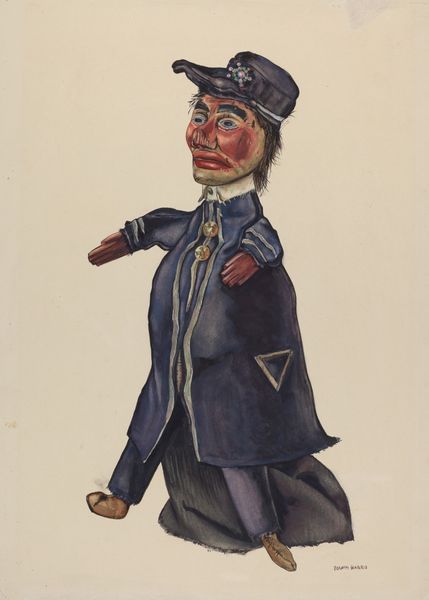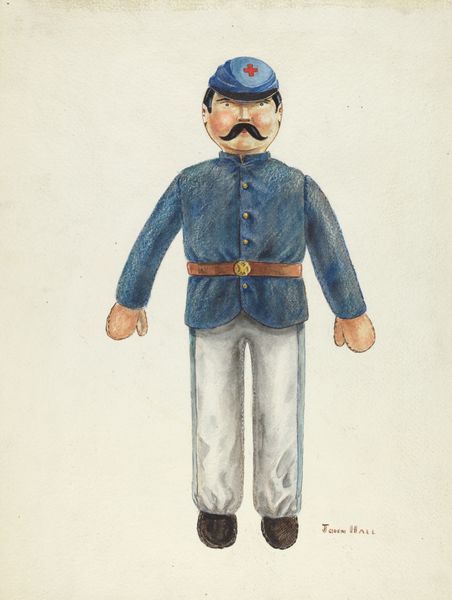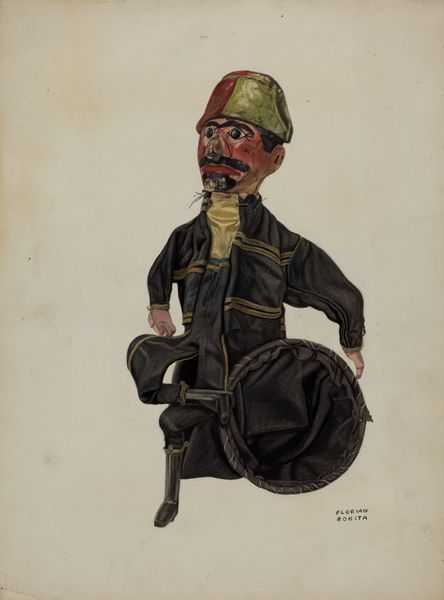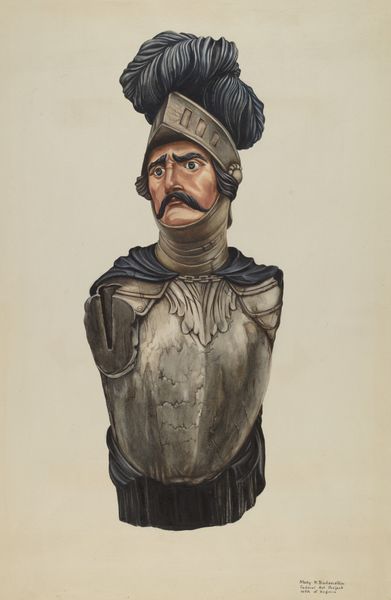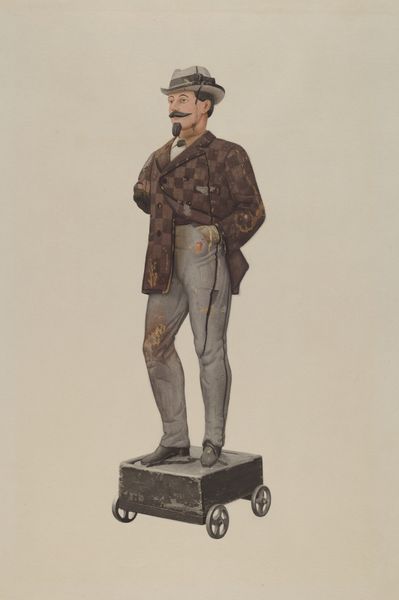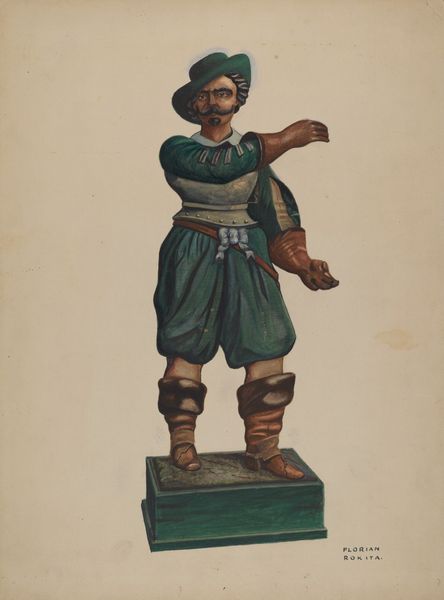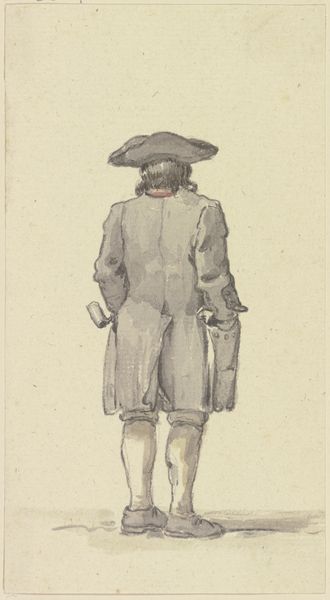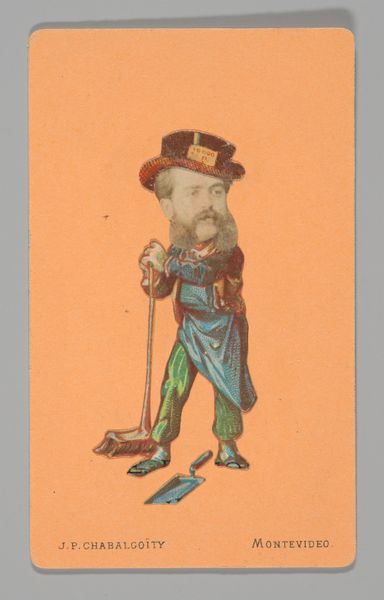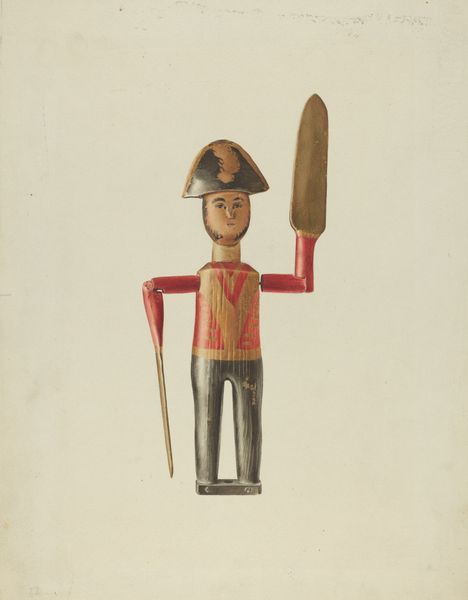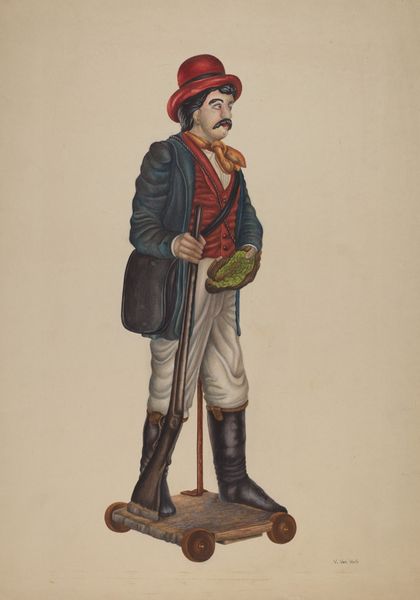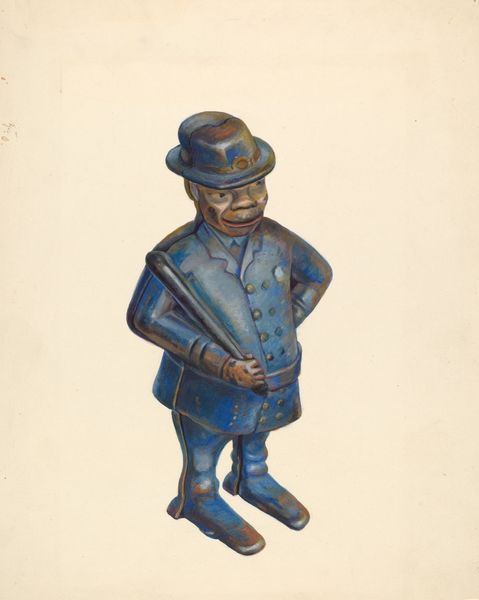
drawing
#
portrait
#
drawing
#
2d character
#
imaginative character sketch
#
caricature
#
caricature
#
character design for game
#
character drawing reference
#
character sketch
#
character design
#
child character design
#
character illustration
#
character design for animation
#
genre-painting
Dimensions: overall: 51 x 38.2 cm (20 1/16 x 15 1/16 in.) Original IAD Object: 17" high
Copyright: National Gallery of Art: CC0 1.0
Curator: This work, dating from around 1937, is entitled "Doll--\"General Grant\"" and it's a drawing by Rex F. Bush. It depicts what appears to be a child’s doll dressed as the famous Union general. Editor: My first thought is, what a curious object. The almost aggressively formal military dress contrasts strangely with the doll-like proportions and face. There’s something subtly unsettling about it. Curator: The interesting thing here is the potential for historical layering. Ulysses S. Grant, a key figure in the Civil War, is already a contested figure when we think about the history of Reconstruction, right? Now, consider that Bush is making this object in 1937—a moment where ideas around history, commemoration, and nationhood were highly charged in America. The Great Depression complicated public perception of national narratives. Editor: Precisely! What could this playful, yet serious, depiction be conveying at this intersection of time and history? On one level, the choice of Grant may evoke notions of unity but I cannot avoid focusing on his duality as an emblematic military figure and controversial two-term president, who some consider an early champion for civil rights and others as presiding over an era of corruption. Curator: Right, and by using the doll as a medium, Bush introduces the dimensions of childhood, of play, and of perhaps a certain naiveté when regarding heroes and national myths. This suggests a reflection on the shaping of young minds and how we pass down narratives. What are we teaching the children? How are we memorializing the past? It becomes a meta-commentary on history. Editor: Absolutely. This could also relate to contemporary theories of childhood. Is this artwork merely commemorating, or is it exploring power dynamics within the domestic sphere, particularly, around militarism and its impact on society? And does it serve to normalize or subtly critique that image, that visual? I feel an examination through feminist theory is highly warranted, wouldn’t you agree? Curator: It's difficult to offer a definitive reading. Still, this seemingly simple artwork acts as a lens through which we can explore ideas related to identity, power, and memory during a pivotal time in American history. Editor: For me, I come away questioning the public role of art. This prompts a consideration about our perceptions and historical narrative through powerful, visual media.
Comments
No comments
Be the first to comment and join the conversation on the ultimate creative platform.

